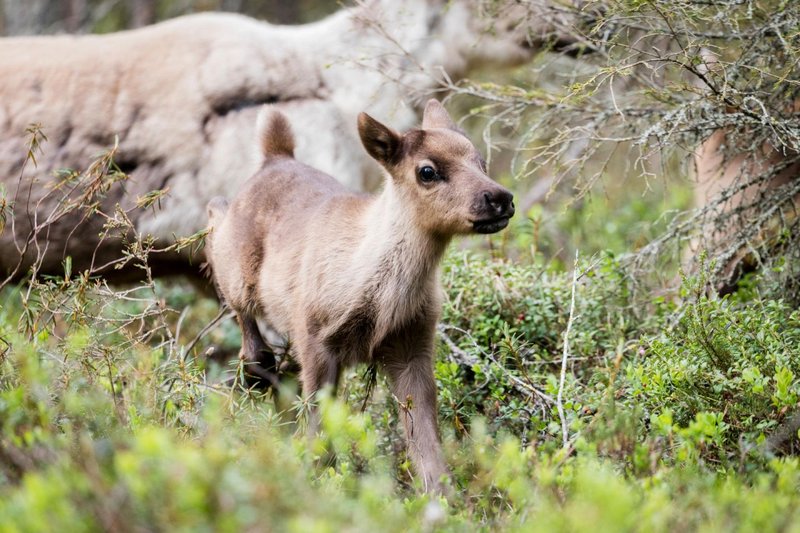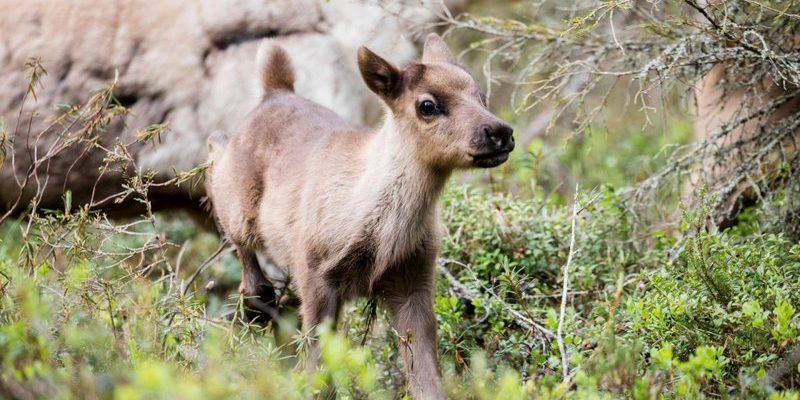
Reindeer, also known as caribou in North America, live in the harsh climates of the Arctic and subarctic regions. They are adapted to survive in some of the toughest environments on Earth. But it’s not just about surviving; it’s about thriving and ensuring the next generation is ready for life outside the cozy confines of mom’s warmth. Imagine being a single parent trying to juggle everything from finding food to protecting your little ones from predators. It can be quite the balancing act, and reindeer do it with grace. So, let’s explore how reindeer raise their young in the wild!
Choosing the Right Time for Birth
The first step in reindeer parenting is timing—their survival depends on it. Reindeer typically give birth in late spring when the snow begins to melt and food sources, like tender grasses and lichen, become more plentiful. This timing is crucial because it ensures that the mother has enough resources to produce milk for her fawns.
Reindeer mothers are extremely instinctive. They can sense the changes in their environment and know when conditions will be best for raising their young. Giving birth in synchrony with the change of seasons not only helps with food availability but also reduces the risk of predation. It’s like setting the stage for a successful start to parenthood.
After about 230 days of gestation, a mother reindeer will usually give birth to a single fawn, though twins can occasionally happen. Here’s the thing: once the fawn arrives, it’s almost like the world gets a little brighter. Newborn reindeer are up and moving within just a few hours, ready to explore the world around them. This rapid development is essential for survival in the wild.
The Bond Between Mother and Fawn
After a fawn is born, the bond between mother and baby is incredibly strong. This connection is vital for nurturing and protection. A mother reindeer recognizes her fawn’s unique scent and calls, which helps keep them close. You might even say it’s like having your very own secret language!
In the early days, the mother stays close, ensuring the fawn gets enough milk to grow strong. As the fawn drinks, it’s not just about food; it’s about bonding. The mother licks the fawn, comforting it and providing warmth. These early experiences shape the fawn’s behavior later in life. Just imagine how comforting it feels to be wrapped in a parent’s care as a child; that’s what these fawns experience too.
However, mother reindeer also need to be cautious. They often choose to hide their fawns in the underbrush while they graze or forage nearby. This instinctual behavior protects the fawn from predators, like wolves and bears. It’s like playing hide-and-seek, but for survival. The mother will return frequently to check on her little one, making sure it’s safe and secure.
Feeding and Nutrition
Feeding is not just a matter of filling a belly; it’s about providing the right nutrients for healthy growth. Reindeer milk is incredibly rich, packed with fat and protein—perfect for those hungry little fawns. For the first few weeks, this milk is the main source of nutrition for the fawn.
As they grow, fawns start to nibble on grass and moss, mimicking their mother’s eating habits. Isn’t it interesting how young animals learn by watching their parents? This early familiarity with food sources is crucial for their survival. It’s like a culinary boot camp in the wild!
Mothers generally teach their fawns what to eat by taking them to feeding grounds where they can mingle with other reindeer. This social aspect of feeding is significant because it helps fawns build relationships with their peers. Developing social skills early can benefit them as they grow older and face challenges in their herds.
Protection from Predators
Living in the wild comes with its fair share of dangers. Predators like wolves and bears are always on the hunt, making protection a top priority for reindeer mothers. The bond between mother and fawn plays a critical role in keeping the young ones safe.
When a threat is near, mother reindeer are incredibly alert. They’ll use their senses to detect danger long before it gets too close. If they sense a predator, you can bet they’ll quickly guide their fawn to safety, often fleeing to dense bushes or higher ground.
Here’s the thing: even with their protective instincts, fawns are still vulnerable. This is why reindeer often stay in groups. Living in herds can enhance safety in numbers, allowing mothers to look out for each other’s young. It’s an amazing example of community parenting in the wild—everyone has each other’s backs.
Growing Up: Independence and Beyond
As the summer rolls on, fawns begin to grow and develop independence. By the time they’re around four months old, they can graze on their own and even start to exceed the mother’s milk intake. This transition is crucial for their survival as they prepare for the challenges of the wild.
You might be wondering: what happens to these young reindeer once they reach independence? Surprisingly, they’ll stay with their mothers for a whole year. This extended time allows the fawn to learn essential life skills, like foraging for food, navigating their territory, and understanding social structures within the herd.
But it’s not just about practical skills; there’s also emotional growth. Fawns learn to play, establish friendships, and even engage in some friendly sparring as they approach maturity. All of these experiences help them develop into healthy adult reindeer, ready to thrive in their natural habitat.
The Cycle Continues
As reindeer young grow into adults, the cycle of life in the wild continues. Female reindeer will eventually start their own families, passing down their knowledge and instincts to the next generation. It’s a rhythmic dance of life that keeps the species thriving, even in harsh and unforgiving environments.
This cycle is a beautiful reminder that parenting, whether in the animal kingdom or among humans, is all about nurturing, teaching, and protecting. Just like reindeer mothers, human parents strive to equip their children with the skills and love they need to navigate the world.
In conclusion, reindeers raise their young through a mix of instinct, care, and community, demonstrating that even in the wild, family bonds are vital for survival. As we marvel at these majestic creatures, we can appreciate the lessons they impart about the importance of nurturing the next generation. Whether it’s in the snowy tundras or our everyday lives, the journey of parenthood is a powerful one.

